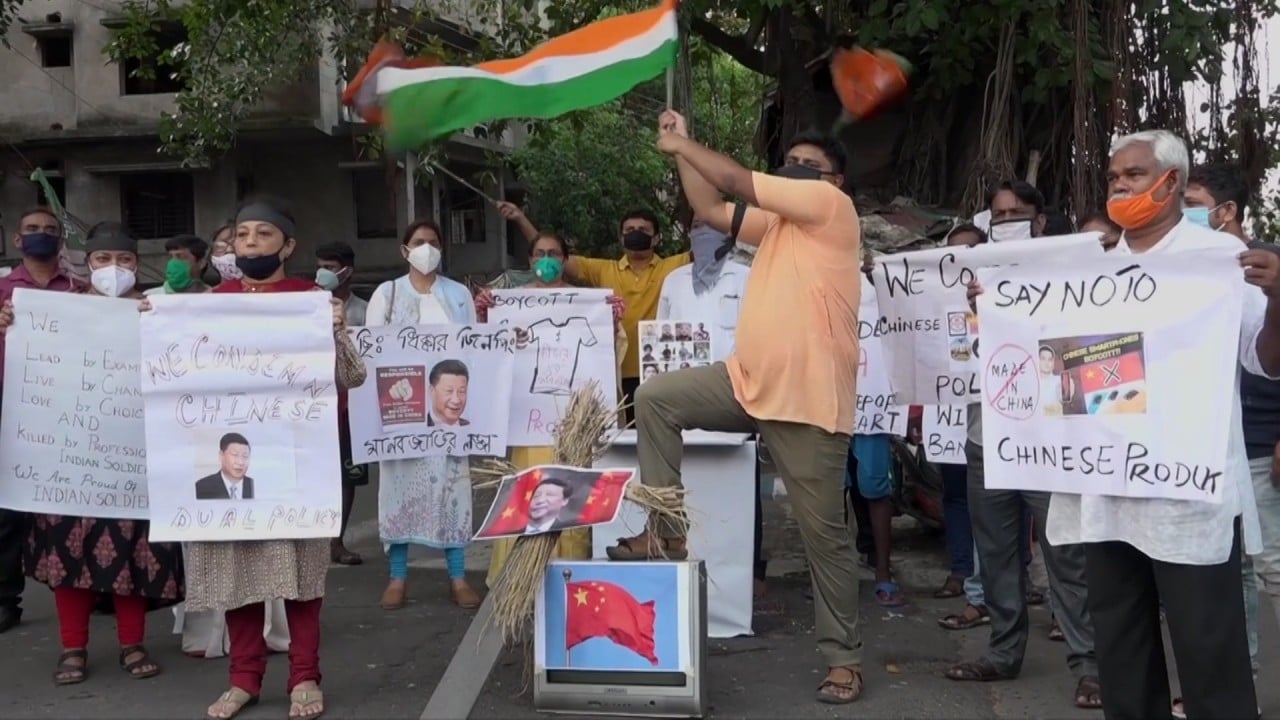Advertisement
Advertisement

Explainer | Why India’s growing economic reliance on China makes it hard to quit
- Recent hostilities between the two powerful neighbours have ratcheted up tensions and seen calls in India for a boycott of everything Chinese
- But the pair’s huge trade flows, New Delhi’s exports push and rising Chinese investment in India, among other things, doesn’t make severing ties easy
India’s economic ties with China run deep, making the recent escalation in political and trade tensions between the two powerful neighbours all the more worrying for businesses.
Following a border clash in which several soldiers on both sides were killed, calls have been growing in India for a boycott of everything Chinese. Prime Minister Narendra Modi’s government this week banned the use of 59 Chinese apps. Goods bought from China are being delayed at Indian ports, and authorities are planning to impose higher tariffs and stringent quality controls on shipments.
But trade links between the two countries are strong and reducing India’s reliance on China will not be easy.
“A blanket ban on Chinese imports is not feasible,” said Harsh Pant, a professor of international relations at King’s College London. “It would be a self-defeating proposition.”
Trade Deficit
The US pipped China to become India’s largest trade partner two years ago, but Beijing continues to remain New Delhi’s biggest source of imports. India’s purchases from China of everything from electronics to key drug ingredients to industrial machinery was just shy of US$70 billion in 2019. The bilateral trade deficit of about US$50 billion was far higher than with any other trading partner.
Beyond China, Modi has been trying to revive domestic manufacturing with a call for self reliance and a reduction in overall imports.

01:58
Indians call for boycott of Chinese goods after deadly border clash with China
Indians call for boycott of Chinese goods after deadly border clash with China
Hong Kong
China’s share of India’s imports has been declining since 2015, but that could be because of trade being diverted to Hong Kong, where shipments have climbed. The share of imports from the semi-autonomous city has more than doubled to 3.6 per cent over the period. Those rising purchases are also now on the government’s radar, according to a report in The Economic Times.
Indian tech firms welcome users as Modi bans Chinese app TikTok
Indian tech firms welcome users as Modi bans Chinese app TikTok
Export Market
India has a goal to triple its annual exports to US$1 trillion by 2025, and trade with China will play a key part in achieving that. China is now one of the top three buyers of Indian exports, accounting for 5.6 per cent of outbound shipments last year. Key export items include gems and jewellery, agricultural products, textiles, and petrochemicals. Delays of these goods would have repercussions on dollar earnings for businesses, said Radhika Rao, India economist at DBS Group Holdings in Singapore.

03:08
India bans dozens of Chinese apps, including TikTok and WeChat, after deadly border clash
India bans dozens of Chinese apps, including TikTok and WeChat, after deadly border clash
Rising Investment
The dependence on China goes beyond trade. Chinese businesses have invested in areas that touch the daily lives of Indian consumers, such as food delivery and ride-hailing apps, e-commerce platforms and digital payments. South China Morning Post-owner Alibaba Group Holding and Tencent Holdings have backed start-ups in India to cash in on a market of 1.3 billion people. Although China lags most major economies in terms of the amount of foreign direct investment put into India over the last two decades, the growth rate has been steadily rising from the mainland as well as Hong Kong in recent years.
Earlier this year, India imposed curbs on some foreign investments in local companies, in a move aimed at preventing opportunistic takeovers by Chinese investors.
China ‘has scope to hit back’ at any Indian economic sanctions
China ‘has scope to hit back’ at any Indian economic sanctions
Tourism Growth
Travel between the two nations has steadily increased over time. Since 2000, the number of Indian visitors to China has increased six-fold to almost 900,000 in 2018, according to the most recent data from China’s National Bureau of Statistics. In the same year, 300,000 Chinese visitors travelled to India, compared with just a few thousands at the turn of the century, according to the data from India’s Ministry of Tourism.

Post
